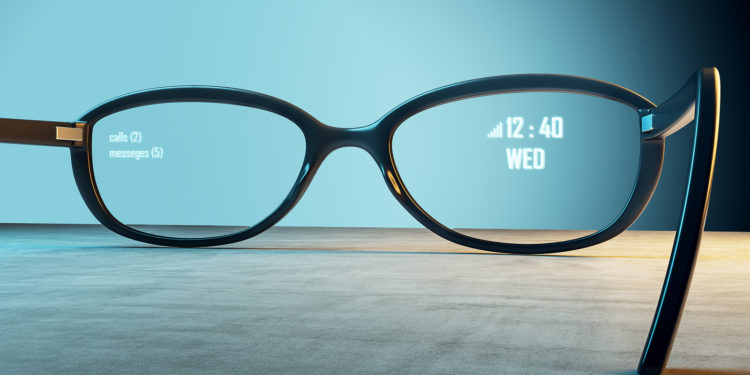Users wearing Apple Glasses or other future AR headsets from Apple could potentially turn any surface into a keyboard – and also display typing above the keys to prevent typos.
Some people prefer the iPad keyboard that appears on the screen to a physical keyboard. Others have trouble using the virtual keyboard. In the future, however, a third version could be added thanks to augmented reality. "Keyboard operation with head-mounted device" is a newly granted patent that is intended to help you type faster. The Apple patent states:
The operation of a keyboard, other input device, and/or any surface may be enhanced by features on a head-mounted device that can display feedback, output, or other functionality based on the user's actions. For example, the head-mounted device may display text generated by the user's keyboard operation. The text may be displayed in a way that allows the user to clearly see the keyboard, the user's hands, and the text generated by the keyboard operation.
Apple Patent Describes Apple Glasses Feature
So you don't even have to look up occasionally to see if you're typing what you think you're typing, but you can see exactly what you're doing. It goes on to say:
The head-mounted device may also display features that make it easier for the user to use the keyboard. For example, text suggestions, keystrokes, or other features related to the keys on the keyboard may be displayed for the user to select.
In other words, autocorrect is coming to Apple's AR headsets. But the point is that it's an AR idea. The text and suggested corrections could be displayed in the AR headset, but so could the entire keyboard. "As another example," the patent states, "the keyboard can be displayed in a position and orientation that corresponds to the arrangement of the user's hands in the field of view of the head-mounted device."
Headset could provide haptic feedback when typing
This isn't quite what it sounds like. If you have a real keyboard in front of you and for some reason you prefer it turned a little to the left, you'll have to move your hands accordingly. However, if the surface in front of you isn't a real keyboard, you - and the AR headset - can do whatever you want. There are already virtual keyboards that work by projecting laser images onto a surface, but with them you'll be typing on a table, for example, and you'll get no feedback other than potentially getting blisters. That could be the case with this type of AR system too, but it could be a lot better - we're talking about Apple, after all.
Other outputs provided by the head-worn device may include audio output and/or haptic feedback.
The system knows when you've pressed a key and can react to it. Depending on the surface, it's hard to imagine there being haptic feedback, but it's not impossible that Apple can implement that too. The patent is attributed to three inventors: Keith J. Hendren, Alex J. Lehmann and the extremely prolific Paul X. Wang. Wang and Lehmann have already filed a patent for haptic feedback in a touch-based input device, but that was intended for the Apple Pencil. Hendren, on the other hand, was listed in a patent application for a glass keyboard. (Photo by peshkov / Bigstockphoto)





